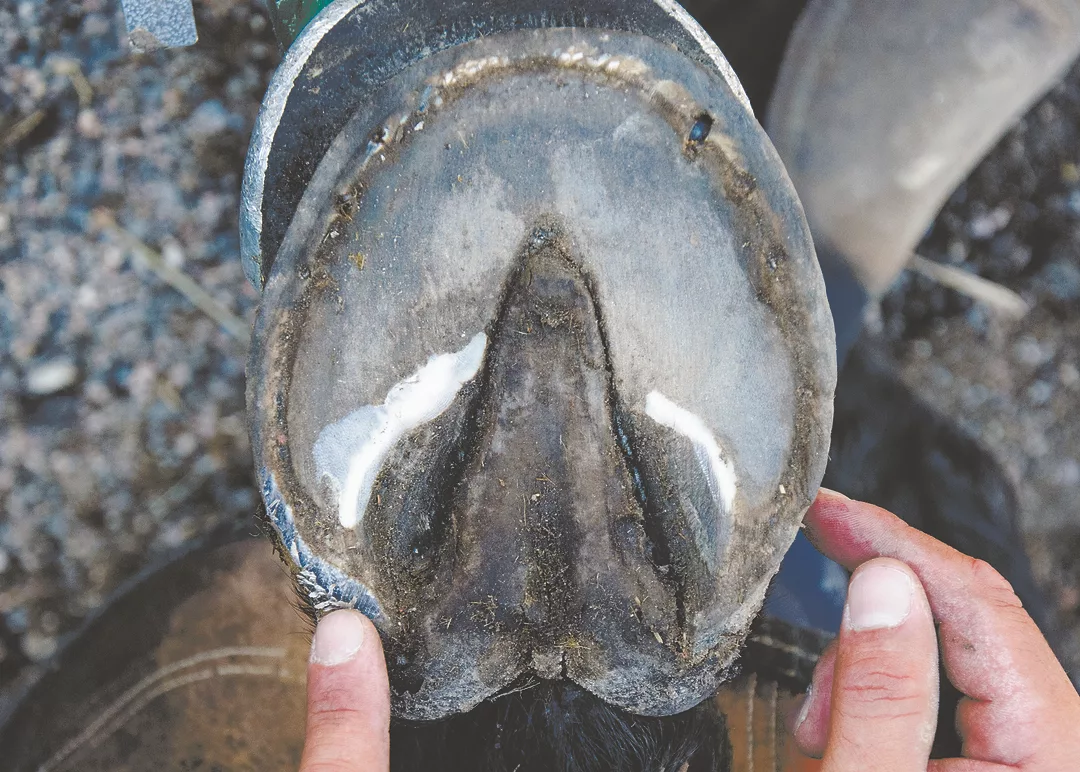Balancing the equine foot is one of the more difficult tasks that farriers face. Before trimming, it’s important to examine the foot and understand how you can influence it, says Steve Foxworth, a Loveland, Colo., farrier.
To illustrate his point, Foxworth was presented with a diagonal imbalance of a hind foot. The medial hoof wall was thicker than the lateral wall. The lateral heel was run in and pushing the medial toe in, while the medial heel was straight. In addition, the level of the sole and level of the wall was the same on the lateral side, while the medial side came up (above).
“As soon as I rasp this, it’s going to open and unfold,” he says. “You’re going to see it get straighter with every rasp stroke. Those are the parts of the balance that I think that we sometimes miss what the tissue or the horn is doing.”
Foxworth says that sighting the leg down the limb is not necessarily the most beneficial way to achieve balance.
“You can look at the cannon bone and see that the foot twists,” he says. “If you’re trying to go straight down this, you’re going to miss the balance. If you look at the tissue, though, and how the horn grows, it’s going to help you unfold it from the foot because the capsule is what distorts.”
Paying attention to landmarks of the foot will help identify where the imbalances are and how to address them. Foxworth illustrates this by pointing out a foot that has a straight medial bar and a severe bend in the lateral bar.
“Since the bar is attached to the heel, as the heel goes forward, the lateral bar has to bend. What that tells me is that the lateral quarter is high. If you pay attention to what the tissue is doing, you’re going to help unfold that foot. The heel starts to unfold and the bar starts to get straighter.”
When achieving medio-lateral balance, Foxworth reminds that the front half of the foot is rigid, while the back is flexible.
“If you pay attention to how the tissue is growing, you have a much better chance of balancing the back half of the foot,” he says. “I don’t think it’s as cut-and-dried as looking down the foot to balance the foot medio-laterally. The foot is also shifting to the lateral side. All four legs — lateral bar, lateral heel, lateral flare. If the bar and heel are coming this way laterally, then that means the wall has to be pushed out.”
For more tips and insights from Foxworth, read “Living A Mindset Of Growth” in the September/October 2018 issue of American Farriers Journal.








